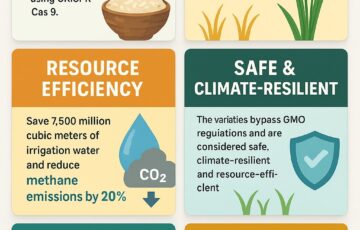UPI Drives Surge in Digital Payments Across India
Why in the news?
UPI’s dominance in India’s digital payment ecosystem has grown substantially, contributing to a ten-fold increase in payment volumes and values since 2018. It now accounts for 83% of digital payment transactions, transforming India’s financial landscape.
Growth in Digital Payments (2013–2024):
- Digital payments in India increased over 3.5 times in value from ₹772 lakh crore (2013) to ₹2,758 lakh crore (2024).
- The volume grew from 222 crore to over 20,787 crore during the same period.
- In the last five years, digital payments surged 16 times in value and 6.7 times in volume.
Role of UPI in Digital Payments:
- Unified Payments Interface (UPI) became the dominant force in digital payments, consolidating various bank accounts into one mobile interface.
- UPI’s share of digital transaction volume grew from 34% in 2019 to 83% in 2024.
- UPI transactions increased by 46 times from 375 crore (2018) to 17,221 crore (2024), while other payment methods doubled.
UPI’s Impact on Payment Systems:
- From 2019 to 2024, UPI transaction values rose from ₹18.37 lakh crore to ₹246.83 lakh crore.
- P2P (Person-to-Person) transactions grew, but P2M (Person-to-Merchant) transactions increased at a faster rate.
- UPI accounted for over 80% of transaction volumes but contributed just 30% in value in 2024.
- Other payment methods like NEFT, IMPS, and credit/debit cards played secondary roles but maintained significant shares in total transaction value.
About Unified Payments Interface (UPI):
- Launched in 2016 and operated by NPCI.
- Enables integration of multiple bank accounts into a single mobile app.
- Built on Immediate Payment Service (IMPS) for instant fund transfers.
- Developed by NPCI, an initiative by RBI and IBA.
- Aims to create a robust payment infrastructure in India.
- Facilitates peer-to-peer and peer-to-merchant transactions seamlessly.
- Supports real-time transfer of funds, ensuring 24/7 availability.






